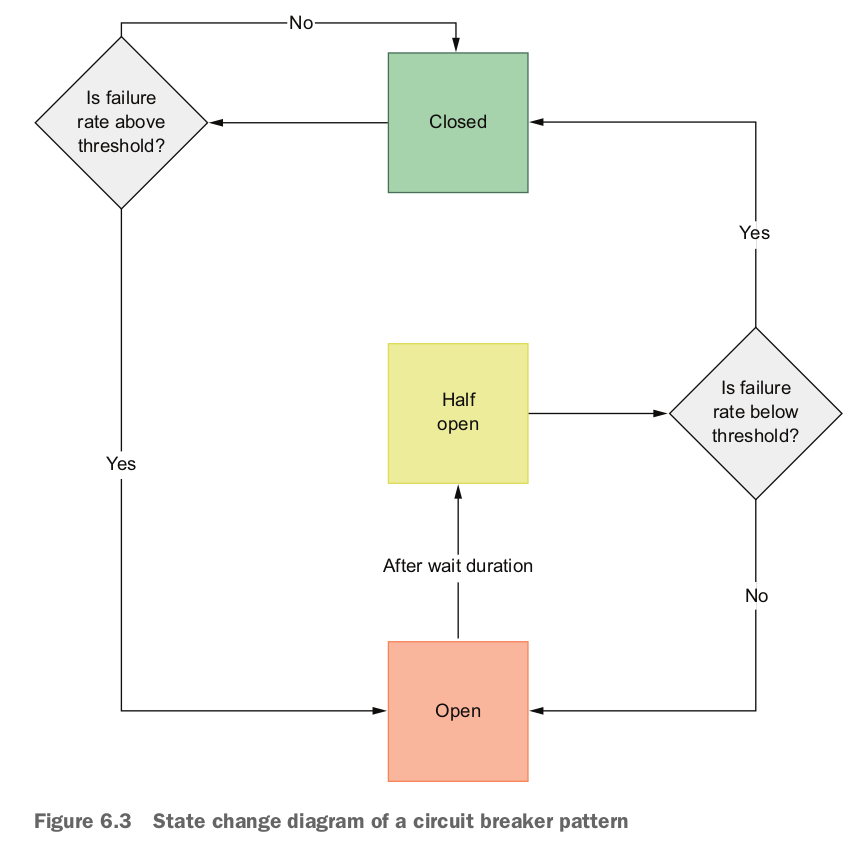The retry pattern works well for covering transient failures, but if we don’t know how long the problem will last, we may end up putting a high load on dependent services with infinite retries. Let’s look at a smarter version of the retry pattern that breaks the connection altogether: the circuit breaker pattern.
Circuit breaker pattern
In the circuit breaker pattern, connections between services are also called circuits, and if the error rate of an interservice communication reaches a threshold value, it opens that circuit, which means the connection between two services is closed intentionally. After this point, any request to the dependent service will immediately fail due to the open circuit. Of course, this is not a permanent situation; it will be reset after a certain time based on your configuration, and if there is no failure in new requests, the circuit will be closed again. Once the reset timeout is triggered, the state will go into a half-open state, and become closed if there is no other failure. If it continues to get failures, it will go back into an open state (figure 6.3).

Circuit breaker implementations allow your business logic to know the result of your execution and decide the next step in the circuit breaker state machine. You can define several circuit breakers with different configurations and apply them to different parts of your application. In this book, we use a Go circuit breaker. (You can see thesource code here: https://github.com/sony/gobreaker.) Before diving deep into the implementation, let’s explore the relevant terms in a circuit breaker implementation:
MaxRequests limits the number of requests allowed to pass through a half-open circuit. The difference between an open and half-open circuit is that a half-open one allows certain requests to pass through the circuit based on your configuration, whereas you can’t pass through an open request.
Interval mainly defines when the count is cleared while the state is closed. For some use cases, you may not want to clear the interval, even if it has been a long time since you last saw a failure. However, this interval is cleared for most use cases to allow users to make failures within a reasonable time interval.
Timeout decides when to change a circuit breaker state from an open to a half-open state. The advantage of this change is that in an open state, the requests will fail fast, whereas in a half-open state, the circuit breaker allows passing through a half-open circuit by limiting the number of requests.
ReadyToTrip checks the state of the failure threshold after the last failure and decides on whether to open the circuit completely.
OnStateChange is mainly used for tracking state changes while handling business models within a function wrapper.
Client interceptors are responsible for modifying/enriching requests before reaching the server side, whereas server interceptors are responsible for applying some logic before using it in server-side business logic (figure 6.4).
